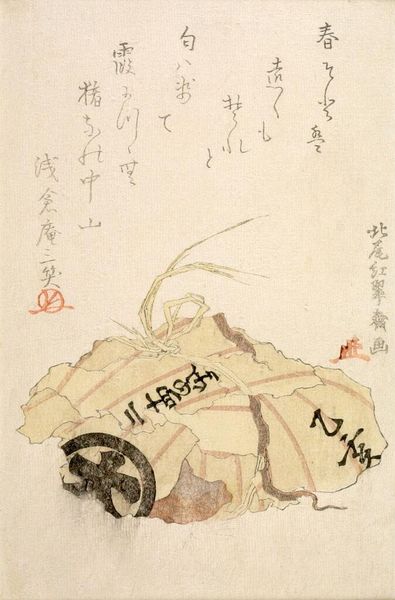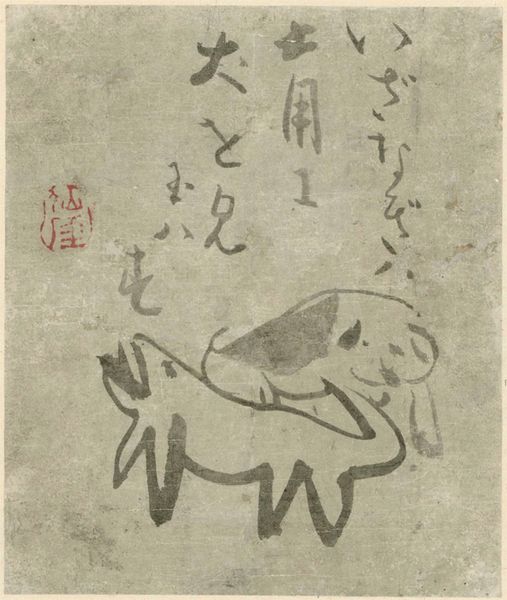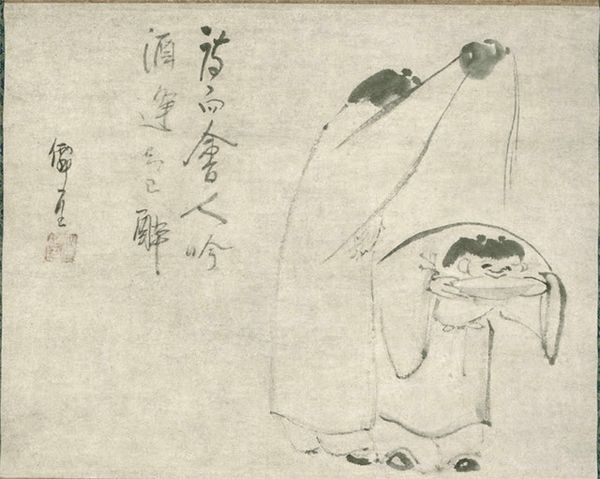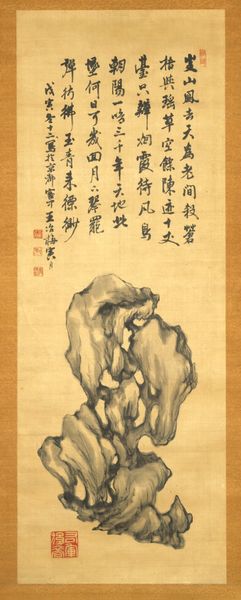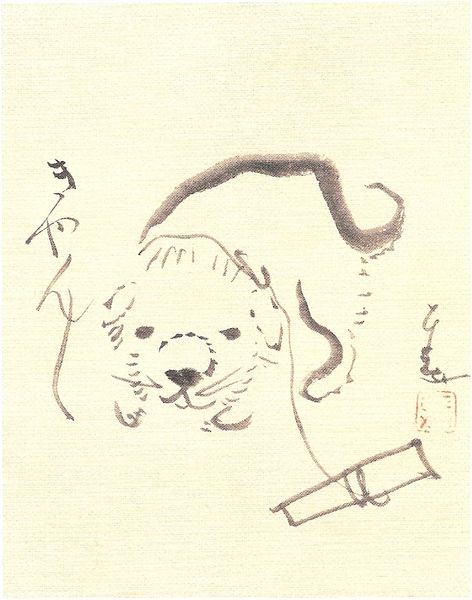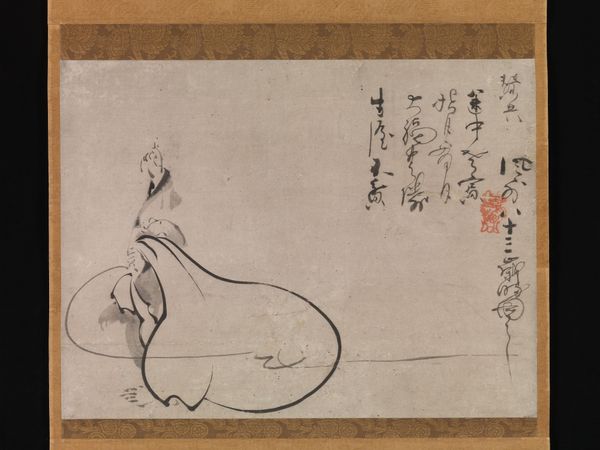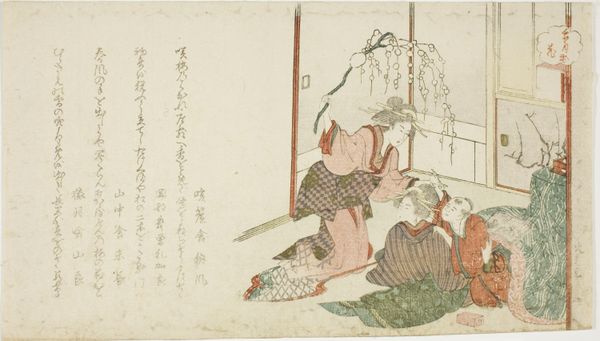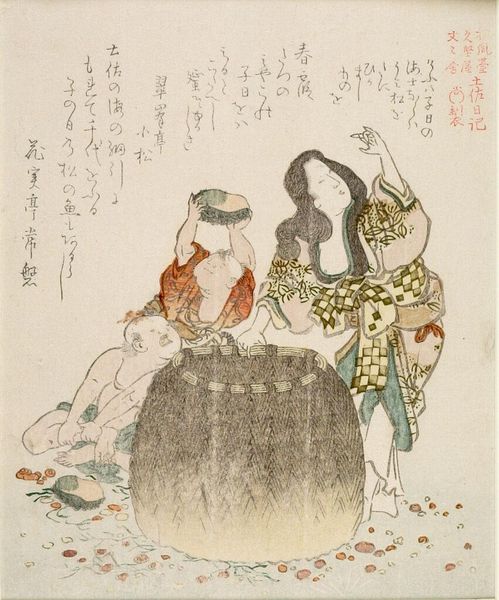
drawing, paper, ink
#
drawing
#
asian-art
#
landscape
#
ukiyo-e
#
figuration
#
paper
#
ink
#
line
Copyright: Public domain
Editor: We're looking at a drawing called "Ox-herding Zen" by Sengai. It seems to be ink on paper, and I find its simplicity so striking. What do you see in this piece? Curator: This deceptively simple image speaks volumes about artistic production within a specific socio-economic context. Let's consider the material realities. Ink, paper – these aren't neutral tools, but commodities produced and circulated through complex networks. Was this paper specially made? Was the ink locally sourced? Sengai’s access to these materials dictated, in part, what he could create. How does the starkness, the seemingly effortless application of ink, belie the actual labor involved? Editor: So, you're saying that even this minimalist drawing involved complex production and labor considerations. That makes me think about the context it was created in. Was there something significant about the ink-making industry at that time? Curator: Exactly. Consider, too, the *act* of drawing. It wasn’t some spontaneous overflow of emotion but a controlled execution using readily available technology, that has gone through significant refinement of tools and process to allow the production. Was Sengai's technique common for his time, or was he innovating with material or process? Moreover, who was this work intended for? Its consumption and reception are key to understanding its broader cultural function. Did wealthy patrons value drawings using precious or refined inks? Editor: It's amazing to consider the social context interwoven with what I initially perceived as a purely spiritual work. The materiality really informs our understanding of its purpose and meaning. Curator: Precisely! By shifting our focus from the purely aesthetic to the means of production, we unveil the socio-economic fabric that underpins all artistic creation. This reminds me to be more conscious of the origins of art, and not to treat it as divorced from the everyday experience.
Comments
No comments
Be the first to comment and join the conversation on the ultimate creative platform.
